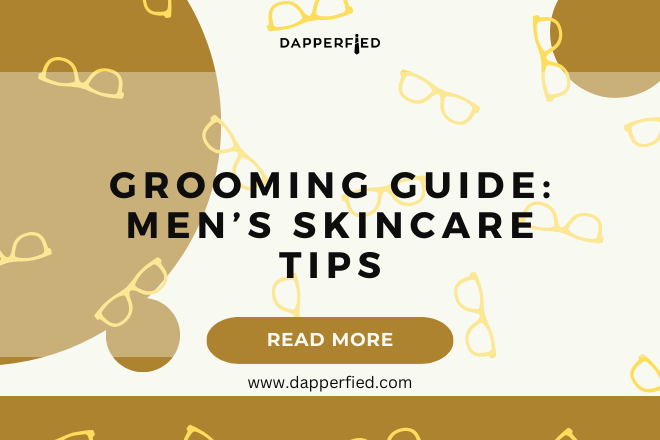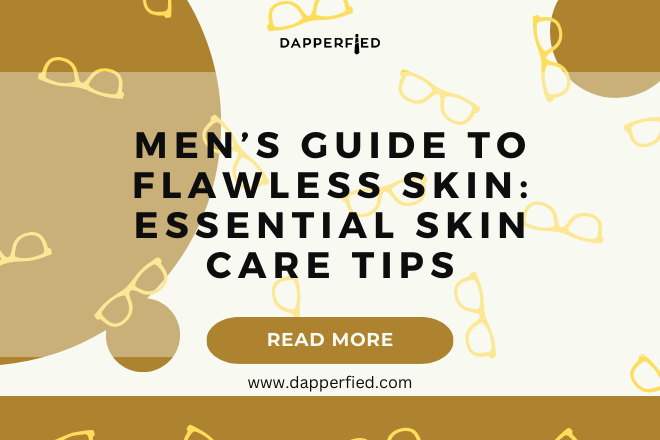
Men's Style
Master the Blade: Essential Shaving Tips for Men
Shaving is a daily ritual for many people, and it plays a significant role in their self-care routine. A good shave can make you feel confident and put together, while a bad shave can leave you feeling uncomfortable and self-conscious. It’s important to understand the basics of shaving and how to properly care for your skin to achieve the best results. In this article, we will discuss everything you need to know about shaving, from choosing the right razor for your skin type to post-shave care.
Key Takeaways
- Understanding the basics of shaving is important for achieving a smooth and comfortable shave.
- Choosing the right razor for your skin type can prevent irritation and razor burn.
- Preparing your skin for a close shave involves washing your face and using warm water to soften your beard.
- Using shaving cream or gel can help lubricate your skin and prevent nicks and cuts.
- Proper technique for shaving your face involves using short, gentle strokes and shaving in the direction of hair growth.
Understanding the Basics of Shaving
Shaving is the process of removing hair from the body using a razor or other sharp instrument. It is an essential part of grooming for both men and women, as it helps maintain a clean and polished appearance. There are different types of razors available in the market, including disposable razors, cartridge razors, safety razors, and electric razors. Each type has its own advantages and disadvantages, so it’s important to choose the one that suits your needs and preferences.
Disposable razors are inexpensive and convenient, but they may not provide the closest shave. Cartridge razors have replaceable blades, making them more cost-effective in the long run. Safety razors have a single blade that provides a close shave and reduces the risk of irritation or ingrown hairs. Electric razors are quick and easy to use, but they may not provide as close of a shave as manual razors. Consider factors such as your skin type, hair thickness, and personal preference when choosing a razor.
Choosing the Right Razor for Your Skin Type
Different skin types require different types of razors to achieve the best results. If you have sensitive skin, it’s important to choose a razor that minimizes irritation and reduces the risk of razor burn or ingrown hairs. Safety razors are often recommended for sensitive skin because they have a single blade that reduces the chances of irritation. Cartridge razors with multiple blades can sometimes cause more irritation, so it’s best to avoid them if you have sensitive skin.
If you have normal or combination skin, you have more options when it comes to choosing a razor. Cartridge razors and safety razors can both work well for this skin type. Consider factors such as the thickness of your hair and the areas you will be shaving when choosing a razor. For example, if you have thick facial hair, a safety razor with a sharper blade may be more effective.
For those with oily skin, it’s important to choose a razor that can effectively remove excess oil and dirt from the skin. Look for razors with lubricating strips or built-in exfoliating features to help cleanse the skin while shaving. Electric razors can also be a good option for oily skin, as they often come with cleaning brushes or solutions to remove excess oil and dirt.
Preparing Your Skin for a Close Shave
| Step | Description |
|---|---|
| 1 | Wash your face with warm water to open up your pores. |
| 2 | Apply a pre-shave oil to soften your beard and protect your skin. |
| 3 | Use a shaving cream or gel to lubricate your skin and reduce irritation. |
| 4 | Shave with the grain of your hair to prevent ingrown hairs and razor burn. |
| 5 | Rinse your face with cold water to close your pores and soothe your skin. |
| 6 | Apply an aftershave lotion or balm to moisturize and protect your skin. |
Preparing your skin before shaving is crucial to achieving a close and comfortable shave. Start by cleansing your face with a gentle cleanser to remove any dirt, oil, or dead skin cells. This will help prevent clogged pores and reduce the risk of irritation. Use warm water to soften the hair and open up the pores, making it easier to shave.
Exfoliating your skin before shaving can also help remove dead skin cells and lift any ingrown hairs. Use a gentle exfoliating scrub or brush to gently massage your face in circular motions. This will help prevent ingrown hairs and provide a smoother surface for shaving.
The Importance of Using Shaving Cream or Gel
Using shaving cream or gel is essential for a smooth and comfortable shave. It helps lubricate the skin, allowing the razor to glide smoothly and reduce friction. Shaving cream or gel also helps soften the hair, making it easier to cut and reducing the risk of irritation or razor burn.
When choosing a shaving cream or gel, consider your skin type and any specific concerns you may have. For example, if you have sensitive skin, look for products that are fragrance-free and formulated for sensitive skin. If you have dry skin, opt for a moisturizing shaving cream or gel to help hydrate and nourish the skin.
Proper Technique for Shaving Your Face

Proper technique is crucial for achieving a close and comfortable shave without cuts or nicks. Start by holding the razor at a 30-degree angle to the skin. This will help prevent irritation and provide a closer shave. Use short, light strokes in the direction of hair growth to minimize the risk of ingrown hairs.
Avoid applying too much pressure while shaving, as this can cause irritation and increase the risk of cuts. Rinse the razor frequently to remove any hair or shaving cream buildup. After shaving, rinse your face with cold water to close the pores and soothe the skin.
Dealing with Ingrown Hairs and Razor Burn
Ingrown hairs and razor burn are common issues that can occur after shaving. Ingrown hairs happen when the hair grows back into the skin instead of outwards, causing redness, bumps, and irritation. Razor burn is a form of skin irritation that can cause redness, itching, and a burning sensation.
To prevent ingrown hairs, exfoliate your skin regularly to remove dead skin cells and lift any trapped hairs. Avoid shaving too closely or against the grain, as this can increase the risk of ingrown hairs. If you do develop an ingrown hair, avoid picking or squeezing it, as this can lead to infection. Instead, gently exfoliate the area and apply a warm compress to help bring the hair to the surface.

To prevent razor burn, make sure to use a sharp razor and avoid applying too much pressure while shaving. Use a soothing aftershave or moisturizer to help calm the skin and reduce inflammation. If you do develop razor burn, avoid using any harsh products or exfoliants on the affected area, as this can further irritate the skin. Instead, apply a cold compress or aloe vera gel to soothe the skin.
Maintaining Your Razor for Optimal Performance
Maintaining your razor is important for optimal performance and longevity. After each use, rinse the razor thoroughly to remove any hair or shaving cream buildup. This will help prevent clogging and ensure a smooth shave. If you’re using a disposable razor, make sure to replace it regularly to maintain sharpness and reduce the risk of irritation.
If you’re using a cartridge razor or safety razor, consider cleaning it with rubbing alcohol or an antibacterial solution to kill any bacteria or germs. This will help prevent infection and keep your razor in good condition. Store your razor in a dry place to prevent rusting and keep it away from moisture.
Post-Shave Care: How to Soothe and Moisturize Your Skin
Post-shave care is just as important as pre-shave preparation. After shaving, rinse your face with cold water to close the pores and soothe the skin. Pat your face dry with a clean towel and apply a soothing aftershave or moisturizer to help calm the skin and reduce inflammation.
Look for products that contain ingredients such as aloe vera, witch hazel, or chamomile, as these can help soothe and hydrate the skin. Avoid products that contain alcohol or fragrances, as these can further irritate the skin.
Tips for Achieving a Smooth and Even Shave
In addition to the tips mentioned above, here are some additional tips for achieving a smooth and even shave:
– Shave in the direction of hair growth to minimize irritation and reduce the risk of ingrown hairs.
– Stretch the skin taut while shaving to provide a smoother surface for the razor.
– Use short, light strokes to minimize the risk of cuts and nicks.
– Avoid going over the same area multiple times, as this can cause irritation and increase the risk of razor burn.
– Take your time and be patient while shaving, especially if you have thick or coarse hair.
The Benefits of a Good Shave: Confidence and Self-Care
A good shave can do wonders for your confidence and self-care routine. When you look good, you feel good, and a clean-shaven face can make you feel more put together and confident. Taking the time to properly care for your skin and achieve a close shave can also be a form of self-care, allowing you to prioritize your well-being and take a moment for yourself.
Proper shaving techniques can also help prevent common issues such as ingrown hairs, razor burn, and irritation. By following the tips and techniques discussed in this article, you can achieve a smooth and comfortable shave that leaves your skin looking and feeling its best.
In conclusion, shaving is an important part of many people’s self-care routine. By understanding the basics of shaving, choosing the right razor for your skin type, preparing your skin properly, using shaving cream or gel, and following proper technique, you can achieve a close and comfortable shave without irritation or discomfort. Remember to take care of your skin after shaving by using soothing aftershaves or moisturizers to keep it hydrated and nourished. By prioritizing self-care through proper shaving techniques, you can boost your confidence and feel your best every day.

If you’re looking to up your grooming game, you might also be interested in our article on the best chronograph watches for men. A good watch can add a touch of sophistication to any outfit, and our guide will help you find the perfect timepiece to complement your style. Check it out here!
FAQs
What are some basic shaving tips for men?
Some basic shaving tips for men include washing the face with warm water before shaving, using a sharp razor, shaving in the direction of hair growth, and moisturizing the skin after shaving.
How often should men shave?
The frequency of shaving depends on personal preference and hair growth. Some men may need to shave daily, while others may only need to shave every few days.
What are some common mistakes men make when shaving?
Some common mistakes men make when shaving include using a dull razor, shaving too quickly, shaving against the grain, and not moisturizing the skin after shaving.
What are some tips for preventing razor burn?
To prevent razor burn, men should use a sharp razor, shave in the direction of hair growth, use shaving cream or gel, and moisturize the skin after shaving.
What are some tips for shaving sensitive skin?
To shave sensitive skin, men should use a sharp razor, shave in the direction of hair growth, use shaving cream or gel specifically designed for sensitive skin, and moisturize the skin after shaving.
What are some tips for maintaining a clean and sharp razor?
To maintain a clean and sharp razor, men should rinse the razor after each use, store it in a dry place, and replace the blades regularly. Some razors also come with a cleaning brush or solution to help keep them clean.
















